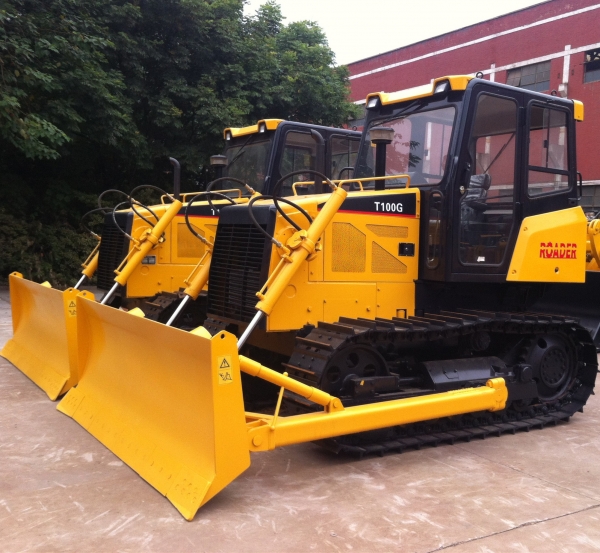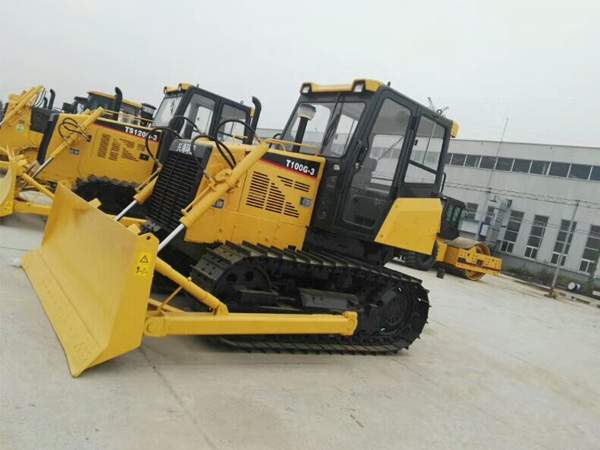Although loaders and bulldozers belong to the same industry, the two are different. Loaders are used for earth-moving construction machinery, while bulldozers are used for earth-moving construction machinery. In addition, it can also be seen literally that the main role of the loader is loading and unloading, and the bulldozer is clearing land, roads and other buildings. There are many differences between the two. Today, bulldozer manufacturers will share with you what are the differences between loaders and bulldozers.
The definition of loaders and bulldozers
Bulldozer is a kind of construction vehicle. Composed of torque converter, transmission and other components, it is divided into crawler bulldozer, tire bulldozer, etc. In addition, the bulldozer is capable of independently completing the work of digging, transporting and unloading soil, and is characterized by flexible operation, convenient rotation, small working surface required, and fast driving speed. It is used for site cleaning or leveling, excavation of small deep foundation pits and backfilling, pushing and building subgrades of small height, etc.
Loader is a kind of earthwork construction machinery widely used in construction projects such as highways, railways, construction, hydropower, ports, mines, etc. It is mainly used for shoveling bulk materials such as soil, sand, lime, and coal, and can also be used for ore , Hard soil, etc. for light shoveling operations. Different auxiliary working devices can also be used for bulldozing, lifting and other materials such as wood loading and unloading operations. Moreover, loaders are often used for filling and excavating roadbed engineering, aggregate and loading of asphalt mixtures and cement concrete yards. In addition, it can also carry out operations such as pushing the soil, leveling the ground, and pulling other machinery.
The difference between loader and bulldozer
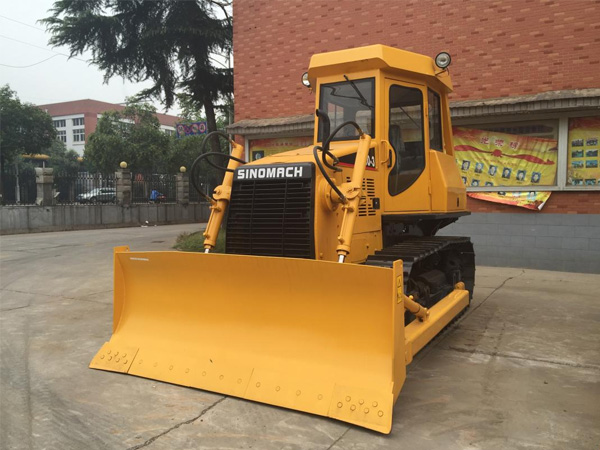
1. Different classification methods
The classification of bulldozers is based on the walking mode. Bulldozers can be divided into crawler type and tire type. Crawler-type bulldozers have high adhesion traction, low ground contact pressure (0.04 to 0.13MPa), strong climbing ability, but low driving speed. Wheeled bulldozers have high traveling speed, flexible maneuverability, short operating cycle time, convenient transportation and transfer, but low traction, which is suitable for situations that require frequent change of construction sites and field work. The other classification is classified by purpose, which can be divided into general-purpose and special-purpose. The universal type is a model that is produced according to standards and is widely used in earth and stone engineering.
Loaders are classified according to different engine power, transmission mode, walking system structure, and loading method. One of the commonly used types is the single bucket loader. According to engine power, the power is less than 74kw for small loaders; the power is 74~147kw for medium loaders; the power is between 147~515kw for large loaders, and the power is greater than 515kw for extra large loaders. Divided by transmission type, hydraulic mechanical transmission, small shock and vibration, long life of transmission parts, convenient operation, automatic adjustment between vehicle speed and external load, generally used in medium and large loaders; hydraulic transmission is stepless speed regulation , The operation is simple, but the startability is poor, generally only used on small loaders; and the electric drive can also be stepless speed regulation, reliable work, simple maintenance, high cost, generally used on large loaders. There are also uses in the classification, and it can be seen that the use is also very important. So what are the different uses of the two.
2. Different uses
A bulldozer is a road construction machine loaded with a bulldozer shovel in front of the tractor, used for bulldozing and leveling construction sites. For example, in road construction, bulldozers can complete the treatment of the roadbed base, take soil from the roadside and add an embankment with a building height of no more than 1 meter, and shovel and transfer along the center line of the road. The soil builds a roadbed of half embankment and half trench. In addition, bulldozers can also be used to level the ground, accumulate loose materials, and remove obstacles in the work area.
In addition, special types of bulldozers are used in specific working conditions. There are wetland bulldozers and marshland bulldozers that use triangular wide crawler plates to reduce the ground pressure, amphibious bulldozers, underwater bulldozers, cabin bulldozers, and unmanned Driving bulldozers, high prototypes and bulldozers operating under high humidity conditions, etc.
Loaders are mainly used for shoveling, loading, unloading, transporting soil and stones and other bulk materials, and can also perform light shoveling operations on rocks and hard soils. If you change to a different working device, you can also complete the work of bulldozing, lifting, loading and unloading other materials. In highway construction, it is mainly used for filling and excavation of roadbed engineering, aggregate and loading of asphalt and cement concrete yard. Because it has the advantages of fast working speed, good maneuverability, and light operation, it has developed rapidly and has become the main machine in earth and stone construction.
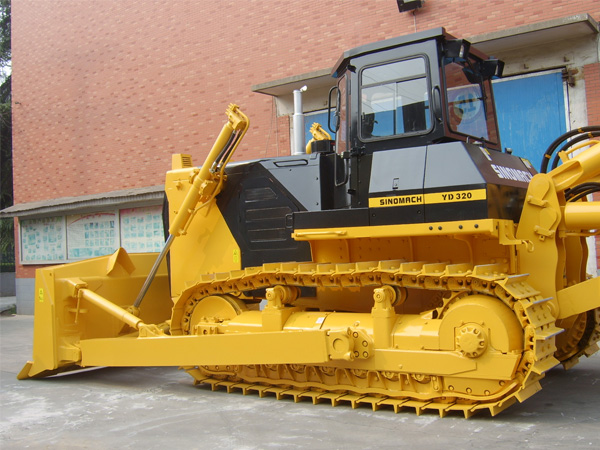
3. The working principle is different
The working principle of bulldozers is based on the transmission system. Bulldozers use mechanical transmission or hydraulic mechanical transmission system with hydraulic torque converter, and a few use hydraulic transmission system. Among them, the crawler bulldozer is mainly composed of engine, transmission system, working device, electrical part, cab and hood. Among them, the mechanical and hydraulic transmission system includes hydraulic torque converter, coupling assembly, planetary gear type power shift transmission, central transmission, steering clutch and brake, final drive and walking system.
The power output is driven by gear transmission and spline connection to drive the working pump in the hydraulic system of the working device, the variable speed pump of the variable torque hydraulic system, and the steering pump of the steering brake hydraulic system; the sprocket represents the final drive of the secondary spur gear transmission Mechanism (including left and right final drive assembly); track shoe includes the walking system including track assembly, trolley frame and suspension assembly.
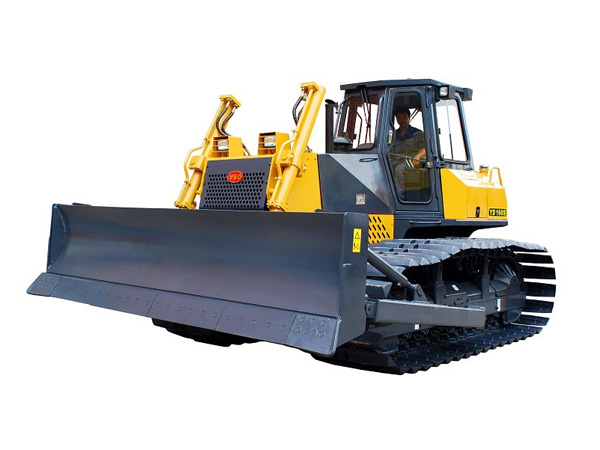
The working principle of the loader is realized by the movement of its working device. The working device is composed of bucket, boom, connecting rod, rocker arm and bucket cylinder, boom cylinder, etc., and the entire working device It is hinged on the frame. The bucket is hinged with the bucket cylinder through a connecting rod and a rocker arm for loading and unloading materials. The boom is hinged with the frame and the boom cylinder to lift the bucket. However, the turning of the bucket and the lifting of the boom need to be operated by hydraulic pressure.
The above is an introduction to the difference between a loader and a bulldozer. Generally speaking, the difference between a bulldozer and a loader is: bulldozers are more suitable for shallow excavation and short transportation of earth. The main purpose of loader is to load trucks, but it can also be used for multiple purposes. The main machinery in stone construction.


